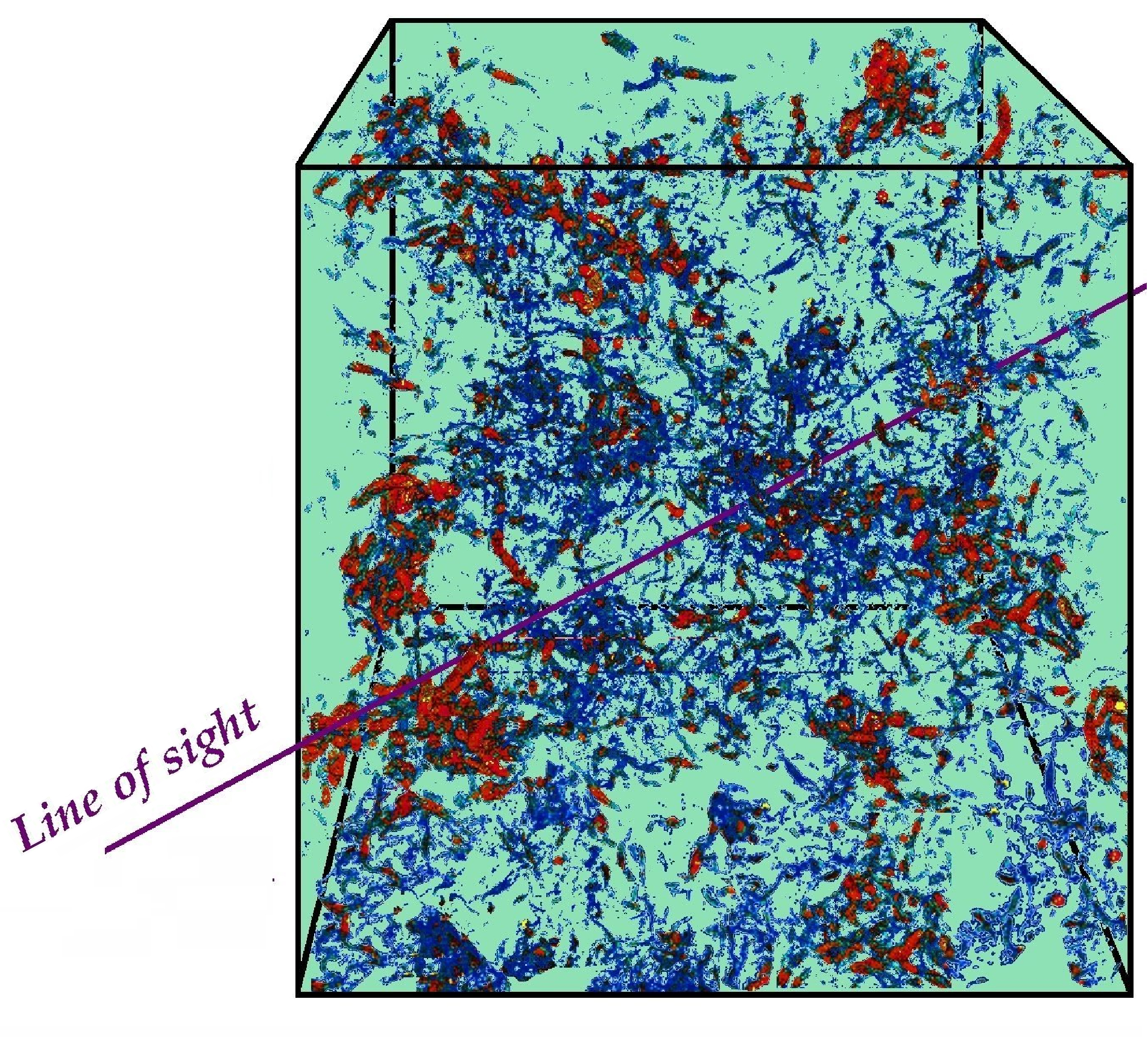TDR Model
The purpose of the TDR (Turbulent Dissipation Regions) model is to predict molecular abundances in the diffuse interstellar medium taking into account those transiently formed in the warm chemistry driven by intermittent bursts of turbulent dissipation. The dissipative structures adopted in the model are small scale (~ 100 AU) magnetized vortices. At steady-state equilibrium, the magnetic field is slightly helical and the ions are almost at rest, hence turbulent dissipation results from both viscous and ion-neutral frictions. In this configuration, the code computes the out-of-equilibrium chemical and thermal evolutions of the gas trapped in the structure during two successive stages: the short-lived (< 1000 yr) active dissipative phase and the long-lasting relaxation period that follows any dissipative burst.

The chemical composition of a random line of sight is reconstructed considering the fact that it necessarily intercepts three kinds of medium : (1) mostly the ambient medium (green in the figure) where the chemistry is driven by the UV radiation field (PDR-type), (2) a large number of active vortices (red) maintained by the kinetic energy transferred from the large scales, and (3) several relaxation stages (blue) whose number is inversely proportional to the dissipation timescale.
Among the final products, the TDR model predicts the column densities of several hundreds of species (including small hydrides at the root of interstellar chemistry) and the excitation of the rovibrational levels of H2. Several improvements are in progress to allow, for instance, the computation of atomic and molecular line profiles taking into account the velocity field obtained in 3D simulations of non-ideal MHD turbulence.
LERMA – Paris Observatory
Scientists and engineers
Edith Falgarone (scientist)
Benjamin Godard (scientist)
David Languignon (engineer)
Nicolas Moreau (engineer)
Guillaume Pineau des Forêts (scientist)
Documentation & References
Contacts
- benjamin.godard at obspm.fr
